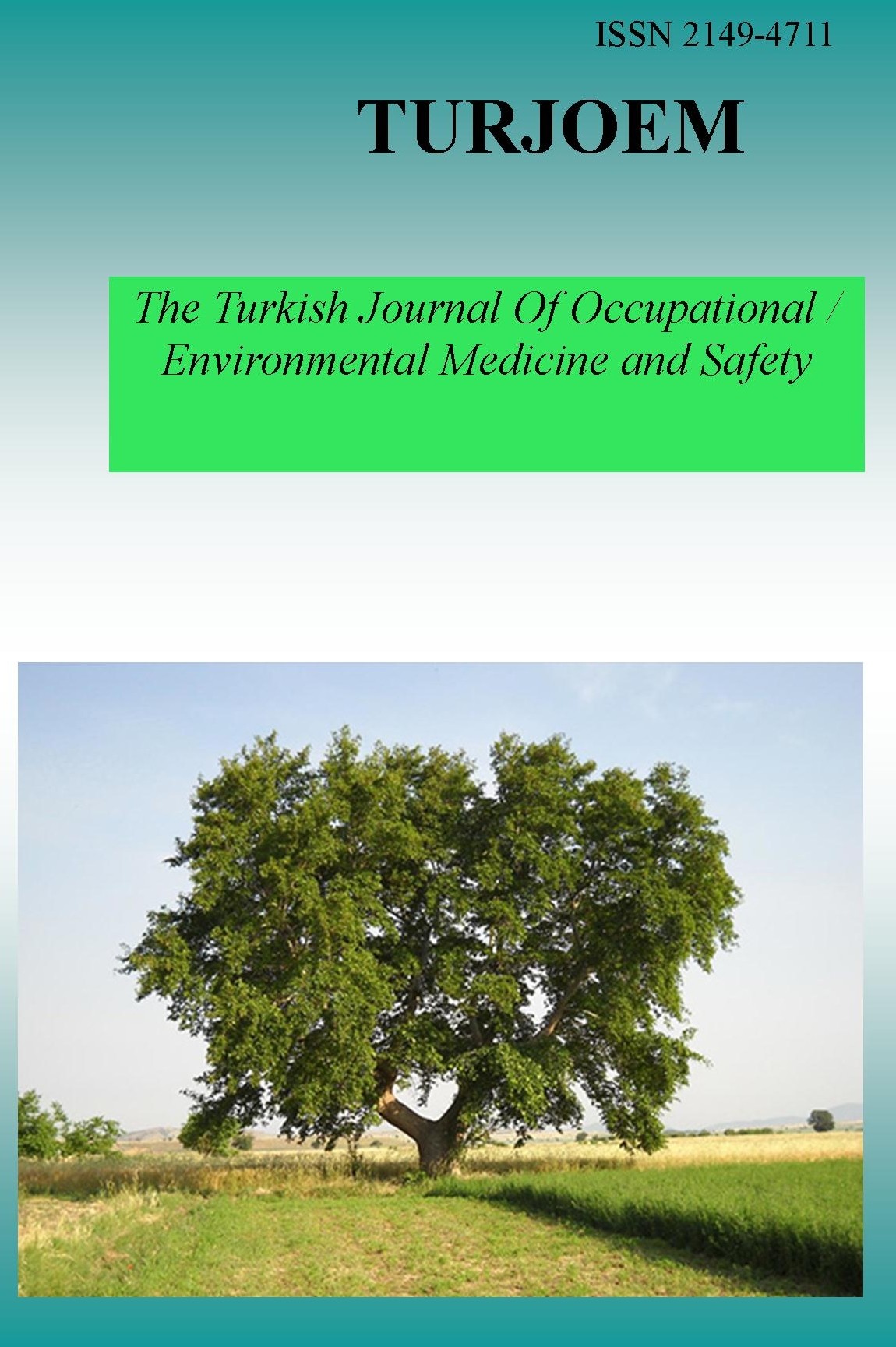HRCT AND PULMONARY FUNCTION FINDINGS OF OCCUPATIONAL ARSENIC EXPOSURE IN WORKERS
HRCT AND PULMONARY FUNCTION FINDINGS OF OCCUPATIONAL ARSENIC EXPOSURE IN WORKERS
___
- Ankara Occupational Health Hospital, Ankara, Turkey
- ISSN: 2149-4711
- Başlangıç: 2015
- Yayıncı: Engin TUTKUN
Effectiveness of Thiamethoxam on collecting adult flies
Halide Nihal ACİKGOZ, Kenan KÖSE, Duygu DİVRAK
ALCOHOL CONTROL MEASURES AND TRAFIC SAFETY
DETERMINATION OF REMAZOL BRILLANT BLUE R DYE WITH UV-VIS SPECTROSCOPY
Halis YURTSEVEN, Zeliha KAYAALTI
Sevcan MAMUR, Deniz YÜZBAŞIOĞLU, Fatma ÜNAL, Kadriye ALTOK, Serpil Müge DEĞER
ENVIRONMENTAL TOXICOLOGY OF EXPLOSIVES
DECOLORIZATION OF TOXIC DYES FROM AQUEOUS SOLUTIONS WITH CHITOSAN COMPOSITE BEADS
Seda ÇINAR, Tülin AYDEMIR, Ahmet ESER, Ayşe DINÇER
DETERMINATION OF PSYCHOACTIVE SUBSTANCES IN TEN SALVIA SPECIES FROM TURKEY
Seda Damla HATİPOGLU, Burhanettin YALCİNKAYA, Muslum AKGOZ, Turan OZTURK, Gulacti TOPCU, Ahmet C. GOREN
APPLYING THE EXPOSOME CONCEPT IN STUDIES OF OCCUPATIONAL AND ENVIRONMENTAL EXPOSURES
